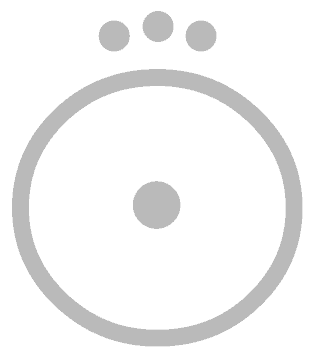I was born in the 80s, when Costa Rica, driven by an injection of U.S capital(1), launched into the world as a tourist destination, taking in short time the first place in the category of eco-tourism. I remember this with great pride.
Thanks to my parents, since I was a child I always kept in touch with the natural diversity of our country. As typical for some Costa Rican families, on the weekends, we had to come up with a plan. In my case that meant going to Poás Volcano and stopping by La Paz Waterfall, going to Cahuita National Park and bathing in the reef at the end of the trail, or any other trip to a place of natural beauty that would keep us active and entertained. These experiences were perhaps what sowed in me the need to better understand our relationship as ticos with nature and all the imaginary surrounding it.
Living in a touristic country, that nowadays protects more than 25% of its territory and that wants to become the first carbon-neutral country in the world, makes it impossible not to feel proud and to interiorize all that “green imaginary” which makes us famous worldwide. However, behind that pride, reality collides with the projected image, the line that divides them becomes confusing, and that is where contradictions, questions and criticisms arise: Do we really care about nature? Do we respect her? Or are we only responding to an economic need?
Living in a touristic country, that nowadays protects more than 25% of its territory and that wants to become the first carbon-neutral country in the world, makes it impossible not to feel proud and to interiorize all that “green imaginary” which makes us famous worldwide. However, behind that pride, reality collides with the projected image, the line that divides them becomes confusing, and that is where contradictions, questions and criticisms arise: Do we really care about nature? Do we respect her? Or are we only responding to an economic need?
At touristic brochures and souvenir stores it is common to find images promoting elements from our indigenous people. The same people that are now below the poverty line and whose cosmovisions were excluded from the Costa Rican identity during the 19th and early 20th centuries. Influenced by liberal eurocentrist thinking, the concept of nature in our idiosyncrasy acquired a preponderantly mercantile value, and little was left of the ancestral indigenous link that is now as exotic for most Costa Ricans as it is for tourists.
To these contradictions we could add shark finning, the discussion about open pit mining and oil exploitation, trawling, the fishing of endangered species like the hammerhead shark, river contamination and the impunity around the murders of environmental activist. All of this turns our “green” projection of the country into an illusion, a fantasy that has set us high worldwide, and that now sustains us economically. What will happen when tourism is not that continuous “income” and stops being the justification for conservation? Will conservation and all its paraphernalia fade into the background?
One possibility is that we return to a strictly utilitarian conservation like the one that existed in the country at the end of the 19th century and the beginning of the 20th century, when the State's concern for the loss of resources or for not obtaining any benefit from its exploitation was latent, especially with wood(3). It wasn’t until modern ecology took hold worldwide, in the middle of the 20th century, that our country decided to direct its efforts in that direction: National Parks were founded and tourism became its main source of income. Did conservation cease to be utilitarian? I don’t think so, but these historical facts that I mention are fundamental pieces to understand “why we conserve” and how our identity has been forged to fit into this development model that is vulnerable to any change in the world economy and that proposes a superficial conservation instead of a model that implies a genuine concern for nature.
I am aware that this whole process that I describe was not that simple and that there were many other actors involved. I believe that although there was no genuine concern of the State and its rulers to protect nature, there were, and are still individuals who took the state’s initiative as an opportunity to advance the ecologist cause in the country. It is inspiring to find those stories of environmental struggles that have taken place in the territory, which despite being hidden in our official identity, are part of our history, and I like to think that little by little they enter our imaginary. My intention here is not to dismantle the green discourse that the State has built, but to reflect on it so that our relationship with nature can truly mirror a genuine, fair and coherent connection with it.

